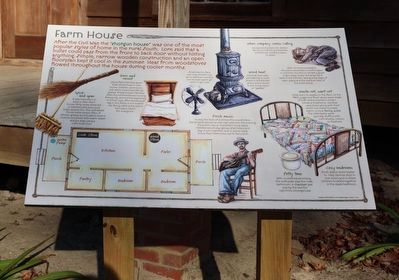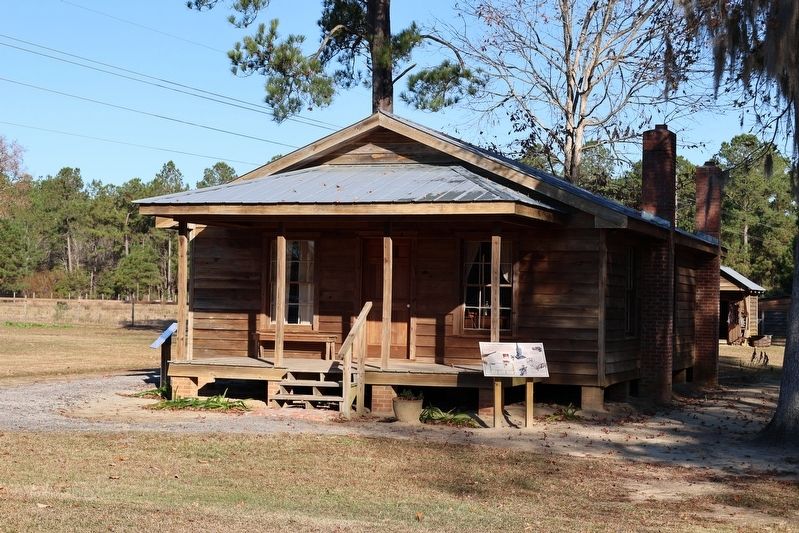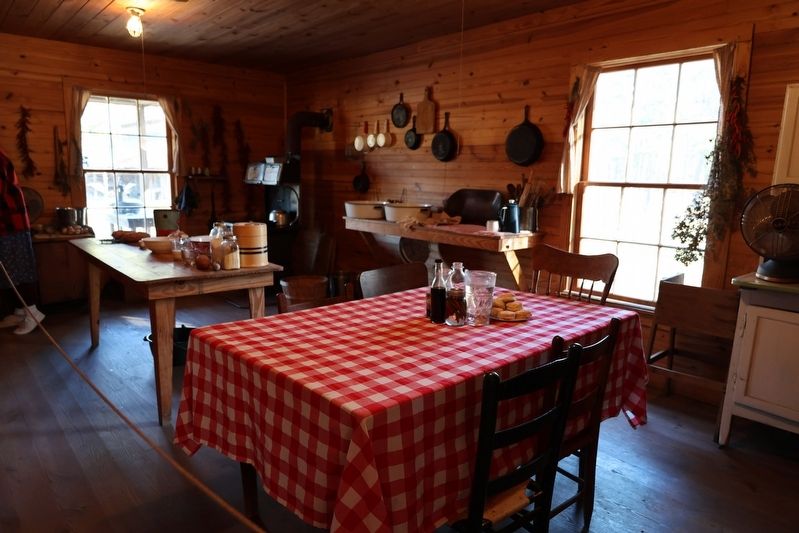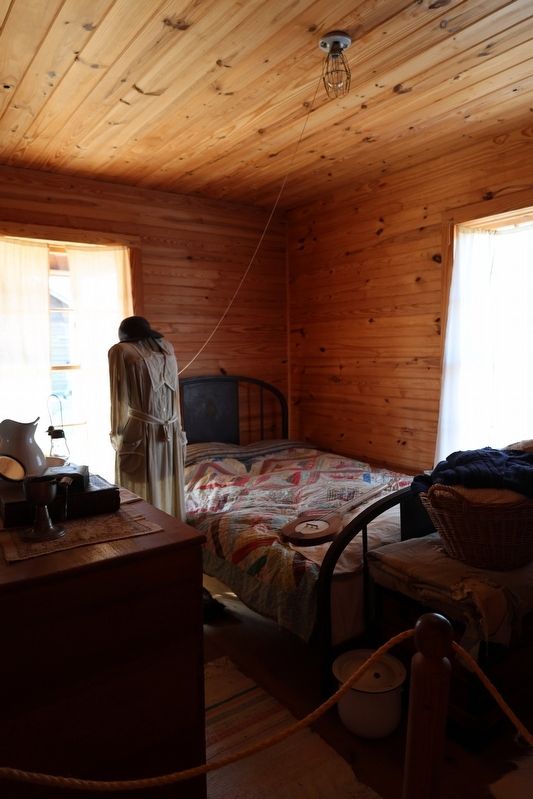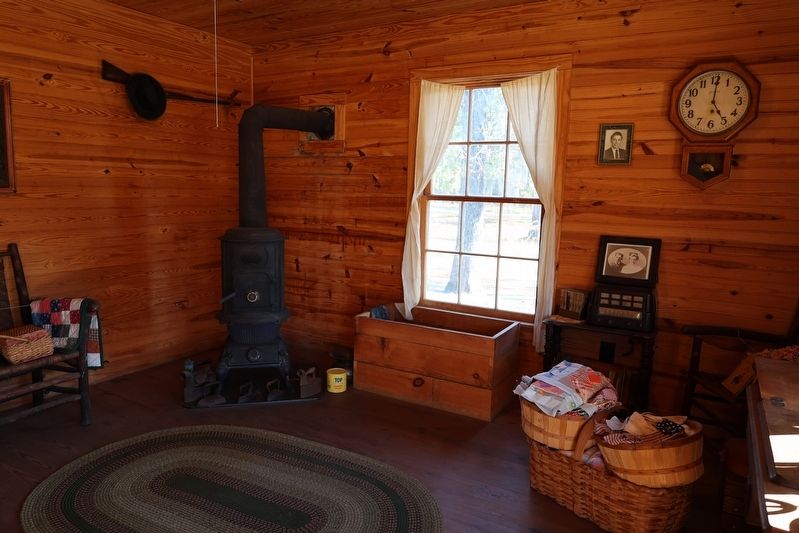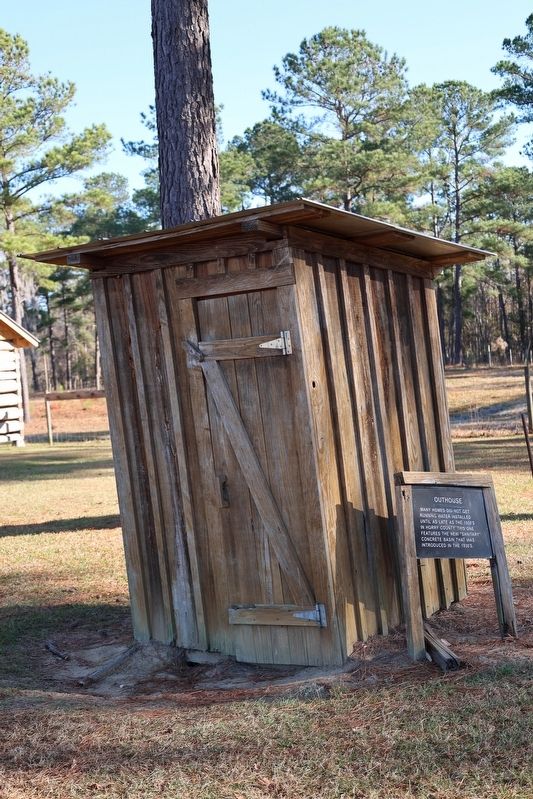Conway in Horry County, South Carolina — The American South (South Atlantic)
Farm House
— L.W. Paul Living History Farm —
Spick and Span
It was important to keep a clean farmhouse. Dirty areas attracted unwanted pests and could make people sick. The unfinished floors were swept often. If kitchen grease accumulated, rooms would be scrubbed with warm water and lye soap using a corn husk mop.
Born and raised
Some farm families spent their whole lives in one home. children were born, sick were used and families passed. Sharecropper families often found themselves moving frequently, sometimes seasonally in either case, after working all day in the fields, a hot meal at the family table and a warm bed was a haven for everyone.
Porch music
During the heat of summer, the wood stove kept indoor temperatures high well into the evening. The porch was an important living space. Families would play games, shell beans and play music together and in some cases move their bedrooms out to the porch.
wood heat
Internal heat was provided by a cook stove in the kitchen and a wood stove in the living room or "parlor".
When company comes calling
Unexpected guests, like distant family or "traveling preachers" sometimes needed a place to sleep.
with no rooms available the porch provided a roofed space in warmer months. In winter a guest might sleep under the large farm table in the kitchen, taking advantage of the open space and the residual heat of the cook stove.
Waste not, want not
Little went to waste on the farm, in the 1930s sugar and flour sacks were made of soft cotton printed in bright colors and patterns. Families used these along with their worn-out clothes to make war, unique family quilts. The mattresses were typically filled with corn shuck, cotton, or feathers.
Cozy bedrooms
Small spaces were easier to heat. Parents sleep in one room and multiple children huddled together in the spare bedroom.
Potty Time
With no internal plumbing, the outhouse was the main bathroom. A chamber pot was by the bed for nighttime emergencies.
Erected by L.W. Paul Living History Farm.
Topics. This historical marker is listed in these topic lists: Entertainment • Parks & Recreational Areas.
Location. 33° 54.338′ N, 79° 2.866′ W. Marker is in Conway, South Carolina, in Horry County. Marker can be reached from Harris Short Cut Road west of U.S. 701, on the right when traveling west. Touch for map. Marker is at or near this postal address: 2279 Harris Short Cut Rd, Conway SC 29526, United States of America. Touch for directions.
Other nearby markers. At least 8 other markers are within walking distance of this marker. The Legacy of Farm to Table (here, next to this marker); Children on the Farm (a few steps from this marker); L.W. Paul Living History Farm (within shouting distance of this marker); Ole' Time Religion (within shouting distance of this marker); Taking Stock of Animals on the Farm (within shouting distance of this marker); Raising Cane (within shouting distance of this marker); Gristmill (about 300 feet away, measured in a direct line); Wood to Wagon (about 300 feet away). Touch for a list and map of all markers in Conway.
Also see . . . L.W. Paul Living History Farm. Horry County Museum (Submitted on December 7, 2023.)
Credits. This page was last revised on December 7, 2023. It was originally submitted on December 6, 2023, by Sandra Hughes Tidwell of Killen, Alabama, USA. This page has been viewed 47 times since then and 15 times this year. Photos: 1, 2, 3, 4, 5, 6. submitted on December 6, 2023, by Sandra Hughes Tidwell of Killen, Alabama, USA. • Bernard Fisher was the editor who published this page.
